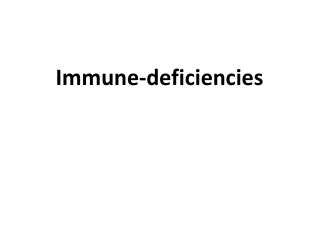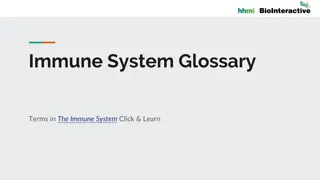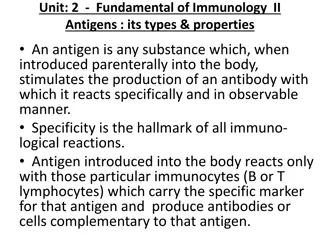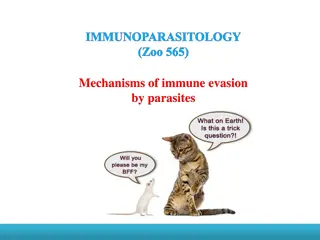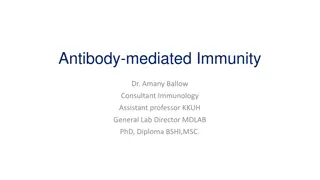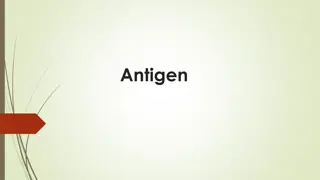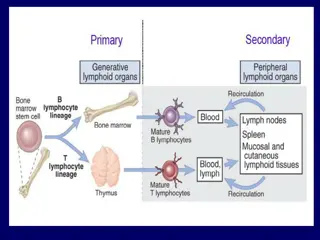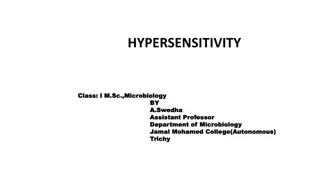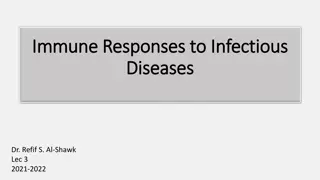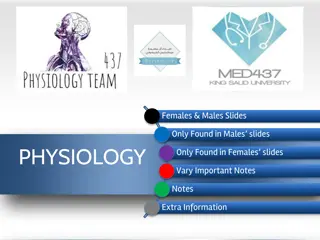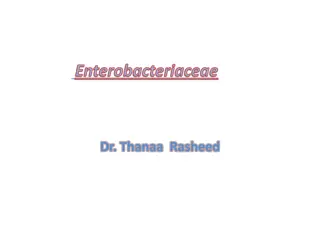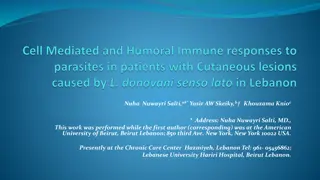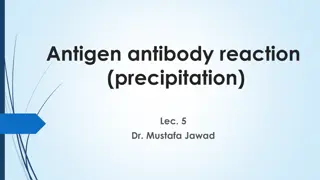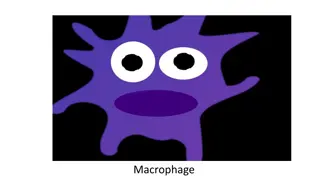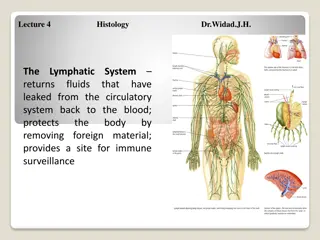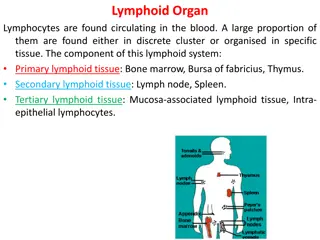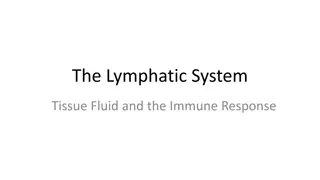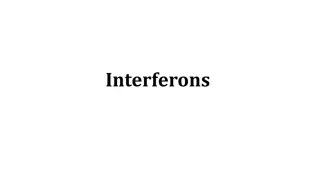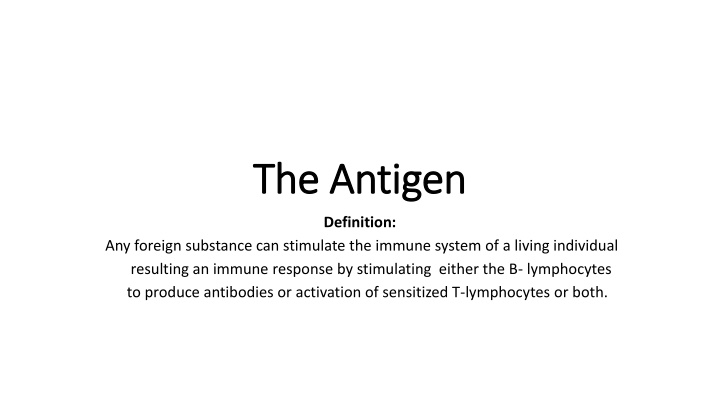
Antigens and Immune Responses
Antigens are foreign substances that stimulate the immune system, triggering specific immune responses. Learn about antigenic determinants, classification of antigens based on origin and functional groups. Explore the role of immunogens, haptens, tolerogens, and allergens in immune reactions with samples of antigens provided. Discover the intricacies of antigen-antibody interactions and epitopes.
Download Presentation

Please find below an Image/Link to download the presentation.
The content on the website is provided AS IS for your information and personal use only. It may not be sold, licensed, or shared on other websites without obtaining consent from the author. If you encounter any issues during the download, it is possible that the publisher has removed the file from their server.
You are allowed to download the files provided on this website for personal or commercial use, subject to the condition that they are used lawfully. All files are the property of their respective owners.
The content on the website is provided AS IS for your information and personal use only. It may not be sold, licensed, or shared on other websites without obtaining consent from the author.
E N D
Presentation Transcript
The Antigen The Antigen Definition: Any foreign substance can stimulate the immune system of a living individual resulting an immune response by stimulating either the B- lymphocytes to produce antibodies or activation of sensitized T-lymphocytes or both.
Samples of antigens: Samples of antigens: Some foreign substances that act as antigens: -Dead or living microorganisms. - Vegetable proteins. -Egg albumin and milk. - plant or animal tissues. -Bacterial toxins. - Serum and Red Blood Cells. - Snake venom.
Antigenic Determinants: Antigenic Determinants: Antigenic determinant: is the smallest unit of antigenicity represented by a small area on the antigen molecule possessing a specific chemical structure and steric configuration, which determines the specific immune response and reacts specifically with antibody also called epitope. The epitope is captured by a suitable part of antibody called The Paratope. The relationship between the epitope and the paratope is similar to the lock and key
The Classification of antigens/ epitope The Classification of antigens/ epitope according to the functional groups:( according to the functional groups:(1 1) ) 1. Immunogens. (Complete Antigens) antigens/epitopes that induce immune response either by producing antibody or sensitized lymphocytes, which in turn react specifically with the immunogens, which produced them. Although all molecules that have the property of immunogenicity also have the property of antigenicity, the reverse is not true. 2. Haptens. (Partial Antigens) is a molecule too small to stimulate antibody formation by itself. When combined with a larger carrier molecule, together function as an antigen and can stimulate an immune response.
Classification of Antigens/ Classification of Antigens/haptens the functional groups( the functional groups(2 2): ): haptens according to according to 3. Tolerogens:(usually self antigens): It is usually non immunogenic because it is self antigens. When self tolerance is removed, the tolerogens become immunogenic causing autoimmune diseases. 4. Allergens: Are foreign and apparently harmless molecules that induce abnormal immunological response allergic reaction involving IgE antibodies.
Classification of Antigens: ( Classification of Antigens: (1 1): ): A. Based on Origin: 1. Microbial . 2. Fimbrial. 3. Somatic. 4. Flagellar. 5. Capsular.
Classification of antigens: Classification of antigens: ( (2 2) ) B. Based on Immune Response: 1- T-independent Antigen: immunoglobulin production without the help of T lymphocytes, e.g. large molecular weight antigens such (pneumococcal polysaccharide, bacterial lipopolysaccharide, fimbrial and flagellar antigen) produce IgM is the main antibody and has a Short term memory. 2- T-dependent Antigens: Do not stimulate antibody production without the help of T lymphocytes, e.g. serum proteins, erythrocytes, haptens, etc. produce IgM, IgG, IgA and IgE and has a Long term memory.
Determinants of immunogenicity Determinants of immunogenicity 1. Foreignness: The first and the most important factor for immunogenicity is the foreignness of antigen. As recognition of self and non-self is an essential function of immune system, Therefore, the more dissimilar molecule from host molecules have greater immunogenicity. 2. Size (Molecular Weight): The most potent immunogens are usually large proteins. Large molecules (hemocyanins, molecular weight 6.75 million) are highly antigenic. Molecular weight less than 10,000 are weakly immunogenic. They become immunogenic only when linked to carrier protein. 3. Chemical Complexity: Protein Ags are more effective than polysaccharide Ags, Lipids and nucleic acids are less antigenic and their antigenicity can be enhanced by coupling them with proteins, Not all proteins are however antigenic A well known exception is gelatin. 4. Susceptibility to Tissue Enzymes:( degradability): Substances, which are metabolized and are susceptible to enzymatic action, are antigenic or immunogenic.
Types of antigens according to the degree of Types of antigens according to the degree of foreignness: foreignness: 1. Autologous antigens: Antigens from the same individual. e.g. skin transplant from thigh to the face. 2. Syngenic antigens: Antigens from identical twins. 3. Allogenic antigens: Antigens from different individuals within the same species. 4. Xenogenic antigens: Antigens from different species.( transplant from sheep to horse).
Antigens receptors: Antigens receptors: The receptors, which recognize antigen and allow the antigen to bind are different in innate or adaptive immune system. 1.pattern recognition receptors (PRRs): found on the cell membrane of macrophages, neutrophils and dendritic cells, and present in bloodstream and tissue fluid as soluble circulating proteins bind to the pathogen-associated molecular pattern (PAMP) 2. B-cell receptors BCR: antibodies recognize soluble antigen. 3. T-cell receptors (TCR): recognize peptides (antigen) when combined with major histocompatibility complex (MHC) molecules on the surface of antigen presenting cells (APC).
Antigenic specificity: Antigenic specificity: 1. Species specificity: Tissues of all members in a species possess species specific antigen. Some degree of cross-reaction may exist between antigens from related species. 2. Isospecificity: Isoantigens are found in some, but not in all members of a species, Such human erythrocyte antigens in different individuals are classified into different blood groups . 3. Autospecificity: self-antigens are ordinarily non-antigenic, but behave as foreign antigens. Lens protein and sperm when released into the circulation (by injury to lens or damage to the testis) antibodies are produced against them( sequestered antigens). 4. Organ specificity: Some organs such as brain, kidney, lens protein of different species share a common antigen. For example, brain tissue antigen of man, shares antigenicity with brain tissue antigen of sheep. 5. Heterogenetic specificity: The same or closely related antigens present in different biological species, such Proteus strains (OX-19, OX-2, OX-K) used as antigens in the diagnosis of typhus fever caused by Rickettsiae in (Weil-Felix) test The specificity of natural tissue antigens of human and animals may be of various types:
Super antigens: Super antigens: SAgs are a class of antigens that result in excessive activation of the immune system. Specifically it causes non-specific activation of T-cells resulting in polyclonal T cell activation and massive cytokine release. SAgs are produced by some pathogenic viruses and bacteria most likely as a defense mechanism against the immune system.
External and internal antigens: Two major types of antigens according to their location whether intracellular or extracellular antigens. A.External antigens: Most bacterial antigens are extracellular antigens. Some types of bacteria can live intracellularly like Listeria and Mycobacterium Tb. The external antigens are presented by Antigen presenting cells(macrophages) in combination with class II MHC molecules. B. The intracellular antigens: Most viral antigens are presented by the infected cells and macrophages in combination with class I MHC molecules. Also tumor antigens are considered as internal antigens. the immune response to tumors is like viral immune response. Presentation of antigens is accomplished with class I MHC molecules.

